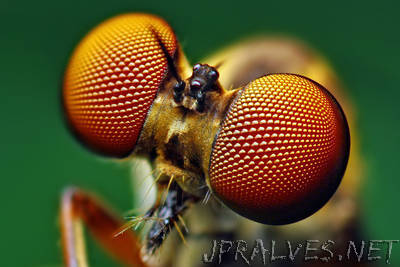
“Packing tiny solar cells together, like micro-lenses in the compound eye of an insect, could pave the way to a new generation of advanced photovoltaics, say Stanford University scientists.
In a new study, the Stanford team used the insect-inspired design to protect a fragile photovoltaic material called perovskite from deteriorating when exposed to heat, moisture or mechanical stress. The results are published in the journal Energy & Environmental Science (E&ES).
“Perovskites are promising, low-cost materials that convert sunlight to electricity as efficiently as conventional solar cells made of silicon,” said Reinhold Dauskardt, a professor of materials science and engineering and senior author of the study. “The problem is that perovskites are extremely unstable and mechanically fragile. They would barely survive the manufacturing process, let alone be durable long term in the environment.”
Most solar devices, like rooftop panels, use a flat, or planar, design. But that approach doesn’t work well with perovskite solar cells.
“Perovskites are the most fragile materials ever tested in the history of our lab,” said graduate student Nicholas Rolston, a co-lead author of the E&ES study. “This fragility is related to the brittle, salt-like crystal structure of perovskite, which has mechanical properties similar to table salt.””
